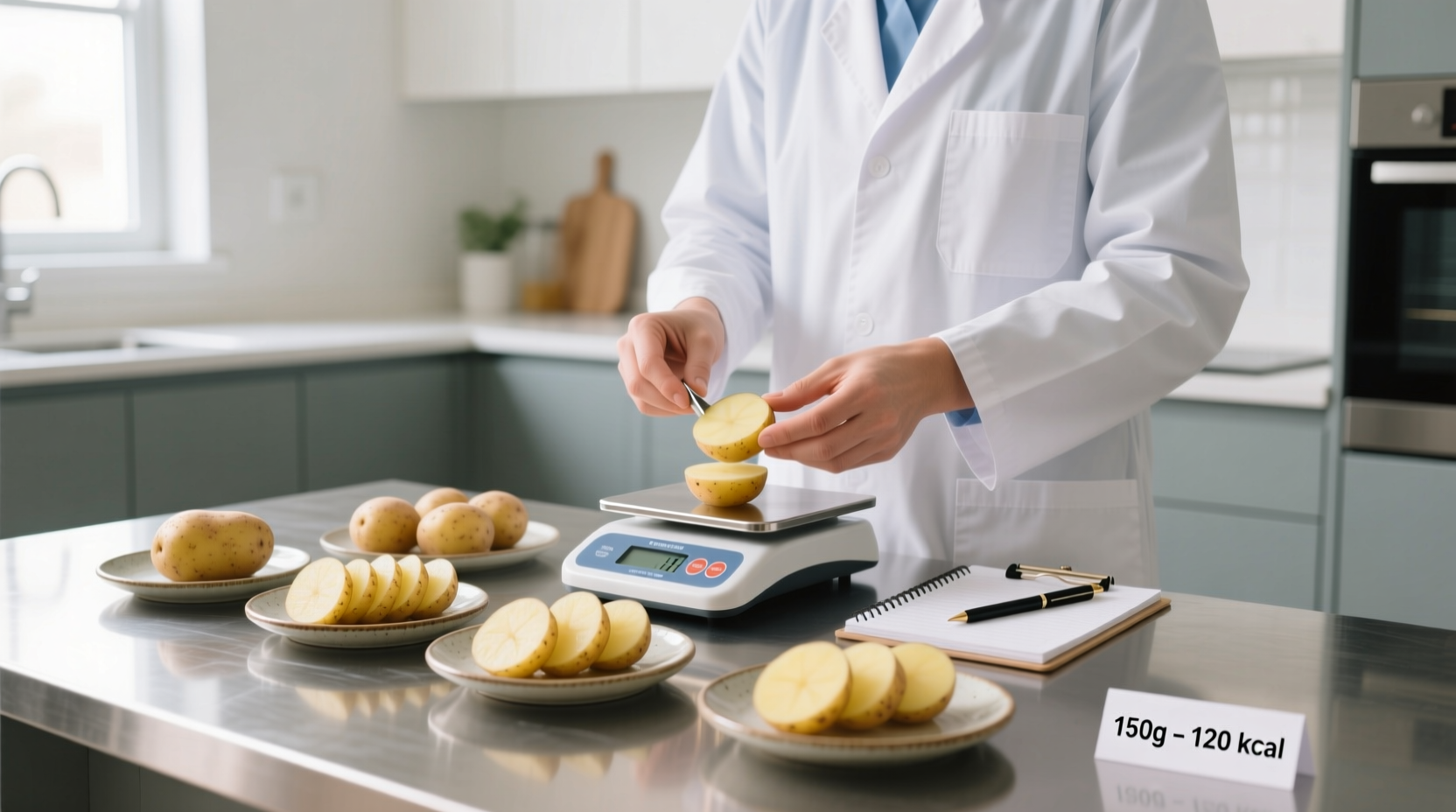Understanding potato calories is essential for balanced meal planning, weight management, and making informed dietary choices. This comprehensive guide delivers precise nutritional data from authoritative sources, breaks down calorie variations by preparation method, and provides practical strategies for incorporating potatoes into a healthy diet without compromising your nutritional goals.
Core Calorie Facts: Potato Types and Sizes
While the classic russet potato is most commonly consumed in the United States, different varieties offer distinct nutritional profiles. The USDA FoodData Central database provides the most reliable calorie measurements for raw and cooked potatoes. Understanding these baseline values helps you make accurate dietary calculations.
| Potato Type | Size (grams) | Raw Calories | Baked Calories | Boiled Calories |
|---|---|---|---|---|
| Russet | 150g (medium) | 110 | 168 | 134 |
| Red | 150g (medium) | 100 | 150 | 120 |
| Sweet | 130g (medium) | 112 | 180 | 140 |
| Yukon Gold | 150g (medium) | 115 | 160 | 130 |
Data sourced from the USDA FoodData Central, the official U.S. government nutrition database, ensures accuracy for dietary tracking. Notice how baking concentrates calories slightly compared to boiling due to water loss, while sweet potatoes contain more natural sugars but also significantly more vitamin A.
How Preparation Methods Dramatically Impact Calorie Content
The way you prepare potatoes transforms their nutritional profile far more than the variety itself. Professional chefs understand that cooking technique is the critical factor in managing calorie content while preserving flavor.
When potatoes are fried, they absorb significant amounts of oil. A medium baked potato (168 calories) becomes a loaded baked potato with sour cream and butter (around 350 calories), while french fries (150g serving) can reach 365 calories. The transformation becomes even more dramatic with deep-fried preparations like potato chips—just 28g (1 ounce) contains approximately 150 calories.
According to research published in the Harvard T.H. Chan School of Public Health, the glycemic index of potatoes also shifts with preparation. Boiling maintains a lower glycemic index (54) compared to baking (75) or frying (70-80), affecting how your body processes those calories.

Nutritional Context: Beyond Just Calories
While calorie counting matters for weight management, focusing solely on calories misses potatoes' significant nutritional benefits. A medium potato provides:
- 45% of your daily vitamin C needs
- 30% of your vitamin B6 requirement
- Over 600mg of potassium (more than a banana)
- 3-4 grams of dietary fiber when eaten with skin
The fiber content in potatoes, particularly when consumed with the skin, creates what nutrition scientists call the "fiber effect"—where the physical structure of the food slows digestion and promotes satiety. This means you feel fuller longer despite the moderate calorie count, making potatoes a valuable component of balanced meal planning when prepared appropriately.
Practical Strategies for Healthy Potato Consumption
As a chef with experience in both professional kitchens and home cooking environments, I've developed these evidence-based strategies that maintain flavor while managing calorie intake:
- Keep the skin on - Adds fiber and nutrients while reducing the need for added fats
- Choose boiling or steaming over baking for lower calorie density
- Use vinegar in boiling water - Research shows this can lower the glycemic index by up to 25%
- Pair with protein and vegetables - Creates balanced meals that stabilize blood sugar
- Measure added fats - One tablespoon of olive oil adds 120 calories
For portion control, remember that one carbohydrate serving equals about 15 grams of carbs or 80 calories. A small potato (130g) represents two carbohydrate servings. The American Diabetes Association recommends pairing one small potato with non-starchy vegetables and lean protein for balanced blood sugar management.
Historical Context of Potato Consumption
Potatoes have evolved from survival food to dietary staple with changing nutritional perceptions. Originally brought to Europe from South America in the 16th century, they were initially met with suspicion. By the 18th century, potatoes became crucial for preventing famine due to their high caloric yield per acre.
According to historical agricultural records, potato consumption peaked during World War II when rationing made them a primary calorie source. Modern nutrition science now recognizes that potatoes themselves aren't problematic—it's the preparation methods and portion sizes that determine their impact on health goals. This historical perspective helps contextualize why potatoes remain such a valuable food source globally.











 浙公网安备
33010002000092号
浙公网安备
33010002000092号 浙B2-20120091-4
浙B2-20120091-4